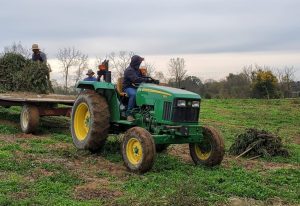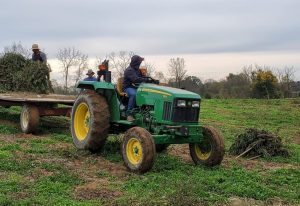
Nationwide hemp production rules that took effect Thursday come with new federal protections for the crop.
Starting in the 2020 growing year, cultivators licensed under federally approved production programs will have the same access to federal loans, crop insurance, disaster assistance and conservation programs that farmers of other commodities have under the U.S. Department of Agriculture (USDA’s) various agencies.
The USDA’s new interim final rule for hemp production is the first step to enabling hemp farmers’ eligibility for those programs under the Farm Service Agency (FSA), Natural Resources Conservation Service (NRCS) and Risk Management Agency (RMA).
Once states and American Indian tribes that plan to regulate hemp production receive federal approval, permitted farmers can begin to apply for those programs, according to Bill Northey, USDA undersecretary for Farm Production and Conservation.
Insurance specifics
USDA officials announcing the hemp rules this week reiterated that farmers producing hemp for fiber, flower or seeds will be able to purchase federal crop insurance through the RMA.
But Northey specified that farmers must be able to prove farm income.
Farmers looking to buy Whole Farm Revenue Protection policies must meet one of three criteria:
- A five-year history of farm income.
- A three-year history of farm income if they are beginning farmers or military veterans.
- A contract for the purchase of their insured industrial hemp crop.
RMA is working on additional insurance options for hemp producers.
Hemp producers who cannot access crop insurance will also be able to purchase the FSA’s Noninsured Crop Disaster Assistance, which will offer insurance coverage in the event of adverse weather conditions.
No coverage for hot hemp
Northey said USDA crop insurance programs are currently not set up to cover hemp crops that must be destroyed for exceeding the 0.3% THC limit, even if a failure stemmed from environmental factors such as temperature fluctuations.
In other words, risk in hemp farming can’t be avoided, USDA officials say.
“Every crop has its risks and rewards,” USDA Undersecretary Greg Ibach said. “Sometimes we have weather conditions that cause wheat to be low-protein and not as valuable in the marketplace, or we have droughts that cause … problems in other crops.
“Hemp is not without its production risks and difficulties, either. Congress has established that 0.3%-and-below THC constitutes hemp in the United States, and producers will need to comply with that provision within the statute, with the allowance for the margin of uncertainty.”
Access to capital
The FSA is currently developing loan programs for hemp producers, which will be available on a limited basis.
Loan programs include:
- Operating loans.
- Ownership loans.
- Beginning farmer loans.
- On-farm storage loans.
Crop insurance programs, farm loans and other USDA programs are also administered to allow for equal opportunity among farmers, according to Northey.
“The opportunities that we have for minority, new and beginning farmers – those programs would also provide eligibility for hemp growers,” he said.
Applying for programs
To take advantage of USDA programs, hemp producers will need to file an acreage report with their local FSA office, which is typically done after spring plantings are complete, according to Northey.
In filing required acreage reports, farmers must:
- Provide their USDA, state or tribal production license or authorization number.
- Identify each field, subfield, lot, greenhouse or structure where hemp is grown.
- Detail the intended use of the reported hemp acreage, whether it’s fiber, flower, grain or seed.
More details on the USDA programs and reporting crop acreage are available here.
Laura Drotleff can be reached at [email protected]


